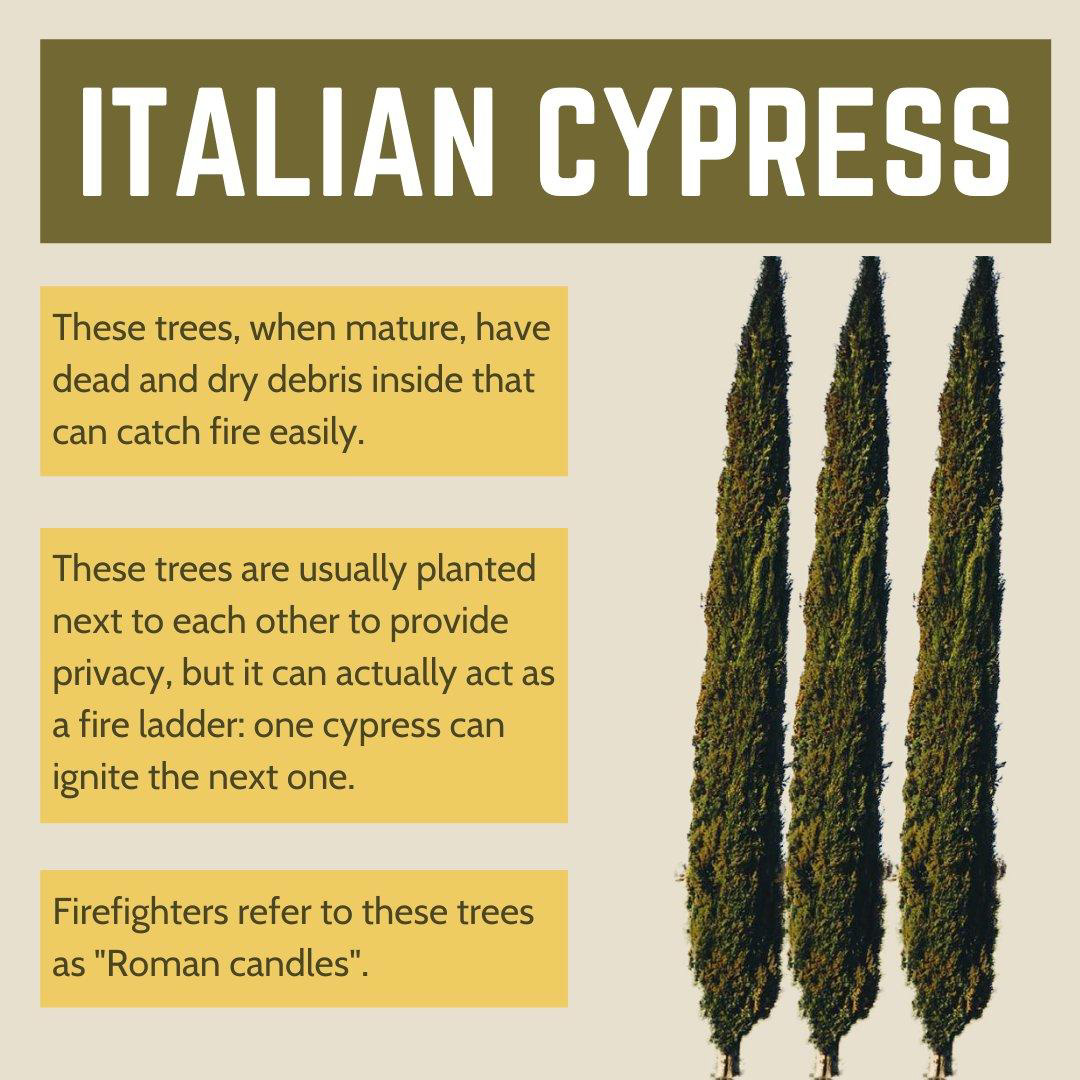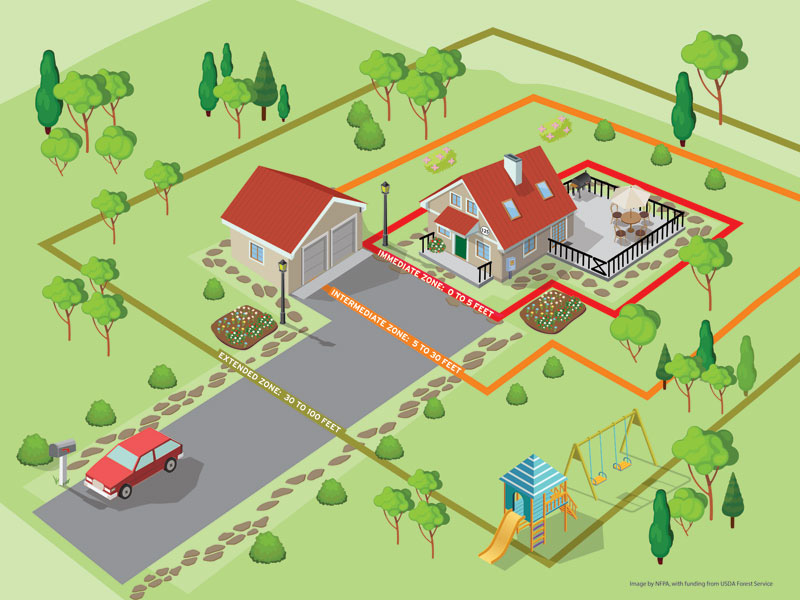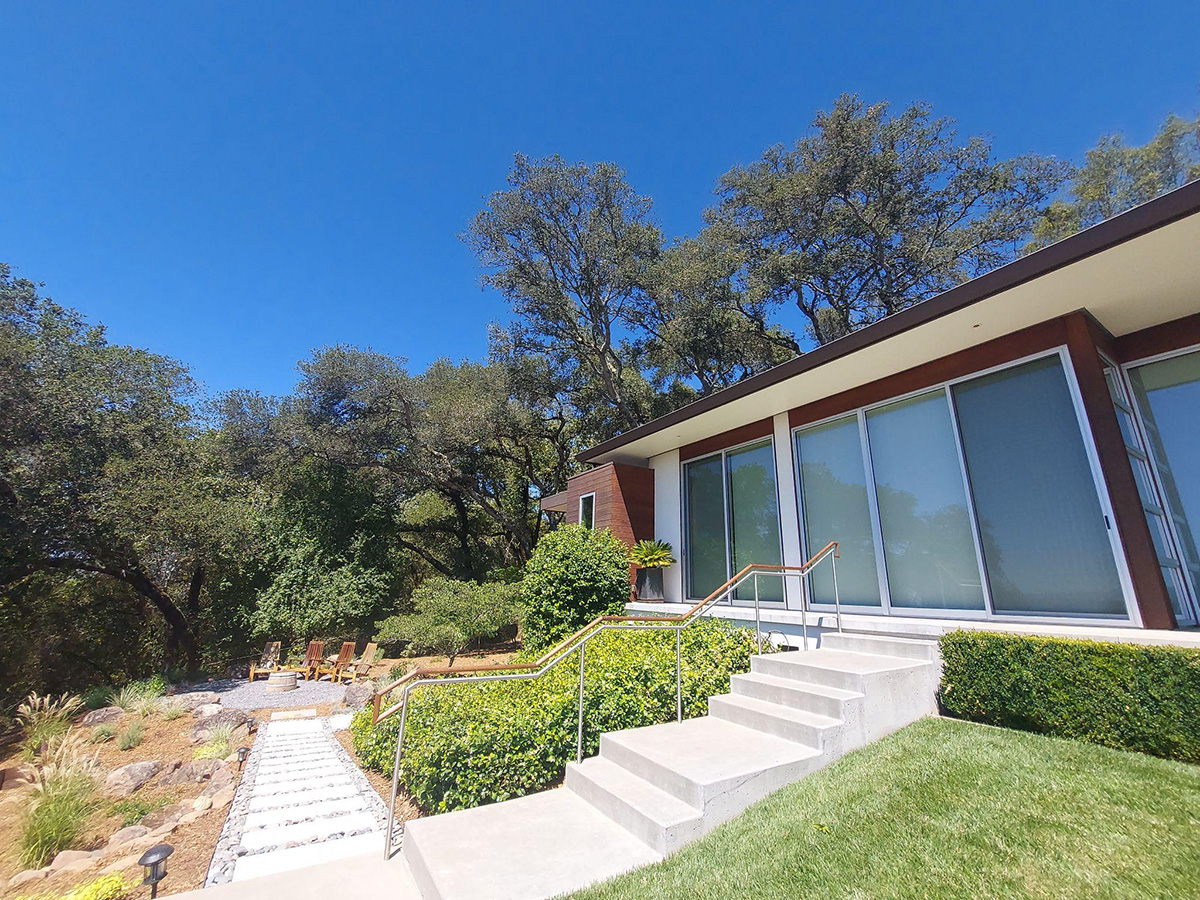
Fire Resistant Landscaping in Sonoma County
Landscapers in Sonoma County understand that fire resistant landscaping is crucial for residency of Sonoma County. By incorporating fire resistant plants and practices in their landscape, homeowners can help protect their property and reduce the risk of wildfire spread.
Selecting The Right Plants
Hiring a landscape designer in Sonoma County who can help you choose plants which are less likely to catch fire is a great first step. They will guide to selecting plants with high moisture content and avoiding plants with excessive dry woody growth. Closer to a structure succulents are a great choice as they won’t catch fire even with a flame against their surface, when planted in dense groups they can even create a fire break stopping the spread of fire. Plants such as Italian Cypress, Juniper, or Eucalyptus should be avoided as they contain very flammable oils which burn hot and for long durations when ignited. These oils along with the large amount of dry leaves and woody growth make them poor choices for a fire resistant landscape.

Zones of Defensible Space
Creating defensible space around your home and structures in an existing landscape is essential and detailed by Cal Fire and described as “Zones of Defense”. The ‘Immediate Zone’ or ‘Zone 0’ is the ‘Ember Resistant Zone’ and includes the first 5 ft from any structure and is designed to keep fire or embers from igniting materials that can spread the fire into your home. Ideal materials for this zone include gravel, pavers, or concrete, and all dead, dying, or dry vegetation should be removed along with leaves, pinecones, or other dry debris. Additionally combustible fencing or pergolas which attach to the house should be reconsidered and alternatives such as metal would reduce risks. Establishing and maintaining these zones of defense can be done by a company such as Inspired Landscapes LLC who provides landscape maintenance services in Sonoma County.
The ‘Intermediate Zone’ or ‘Zone 1 – Lean, Clean, and Green Zone’ which extends 30ft from a building includes most of the basics from Zone 0 including removing dry debris/vegetation but allows for more types of plantings including flowers and shrubs. However in Zone 1 we should still focus on planting species which are low growing and high moisture content. Avoid trees and dense groups of plants which can act as a fire ladder to your structures. The ‘Extended Zone’ or ‘Zone 2 – Reduce Fuel Zone’ extends to 100 from a building and requires keeping annual grass mowed down to 4’’ in height and maintaining reasonable spacing between shrubs and trees. The main difference in this zone is some amount of leaf litter and small branches is permitted but any piles of wood or flammable materials should have at least 1 ft of clearance to all sides down to bare mineral soil.
Maintaining Trees for Fire Resilience
Pruning trees which come within 10’ ft of your roof line with a focus on any areas nearby a chimney or vent is of particular importance. Additionally pruning branches which are 8 ft or less from the ground is very important as this reduces the chance that flames spreading across the ground might jump into the canopy of a tree. Often tree trunks are quite resistant to catching flame, however the thinner branches and leaves in the canopy are quite flammable and often lead to embers flying through the air onto roofs or into vents which rapidly spread the fire into a home in ways that are very difficult to contain. Contact us for landscape maintenance services in Sonoma County as we are highly experienced in fire resilience preparation and can advise you on which trees should be pruned, the correct time of year to do so for the health of the tree, and how to prune them to encourage growth away from the ground and surrounding structures.

Use Hardscapes as Fire Breaks
In addition to plants, homeowners should utilize hardscaping elements to create fire breaks and reduce the spread of fire. Pathways, patios, and other non-flammable areas which are free from any vegetation provide the best defense. Calfire and other officials recommend a gravel path around the perimeter of the property as fire spreading across through surrounding weeds, grasses, vegetation across the ground can be brought to halt once it reaches this boundary. In our work reconstructing landscapes after recent fires we’ve seen more than one occasion where a simple 3-4’ gravel path likely saved a house from significant damage by halting the spread of fire through low growing grasses. Pavers, stone walls, concrete, or other surfaces are also highly effective in halting a fire while providing the additional benefit of giving firefighters a clear area to work and move around a property while fighting an active fire. Landscape design contractors in Sonoma County can help you plan a functional, aesthetically pleasing hardscape which improves the fire resistant properties of your landscape.
Proper Irrigation Keeps Plants Healthy
Another important aspect of fire resistant landscaping is to maintain the health of your plants through proper pruning and care but also through an efficient irrigation system. Even plants which are fire resistant can become a hazard if they are full of dead growth or become overly dry in the summer months. Many studies of plants which are largely considered fire resistant can become hazards if they are overly drought stressed. While we want to conserve water in the landscape by picking water-wise plants, we want to ensure they are well cared for with an irrigation system and schedule appropriate for their needs. As irrigation specialists in Sonoma County, Inspired Landscapes LLC is uniquely suited to help you design and maintain an irrigation system to maximize your landscape’s fire resistant properties.
As a homeowner in Sonoma County there is no doubt that fire resistant landscaping is essential due the fire prone nature of our region. Choosing fire resistant plants, creating defensible space, and keeping up with regular maintenance of plants and irrigation is of great importance in making your landscapes and home resilient in the face of wildfire By taking a number of simple yet important steps you can rest more easily knowing that when a fire comes you’ve created defensible space that is easily accessed by fire fighters and landscaping designed to limit the intensity and spread of fire.

Owner, Inspired Landscapes LLC
Matthew Ripley is the owner of Inspired Landscapes LLC, a Healdsburg based landscape design, installation, maintenance, and irrigation firm serving Sonoma County. His work blends horticultural expertise with sustainable practices, drawing creative influence from Sierra backpacking and Sonoma winery estates to craft gardens that invite wildlife and year round color. Client testimonials highlight his design leadership on residential, estate, and winery properties across the region.





